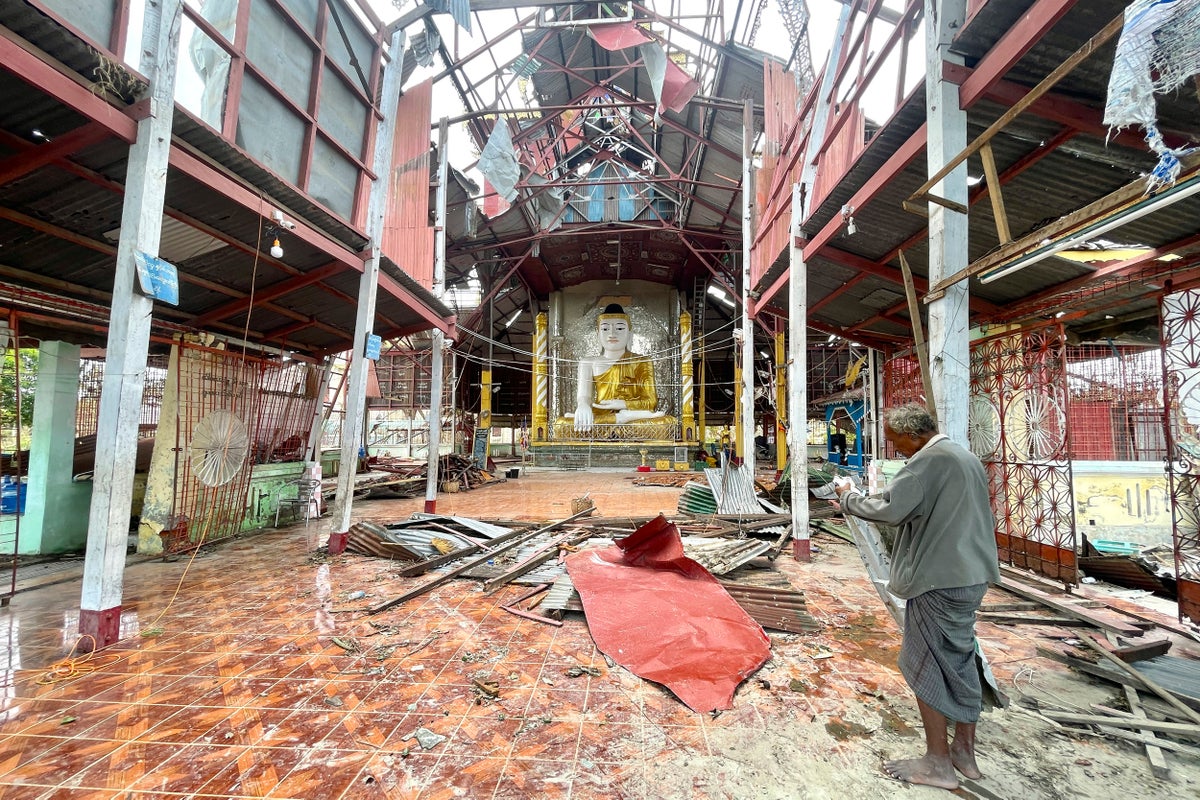
As residents of Myanmar’s Rakhine and Chin states worked Monday to repair the devastation from last week’s Cyclone Mocha, concern is rising about whether the urgent needs for shelter, food, drinking water and medical assistance can be met before the onset of seasonal monsoon rains.
Mocha hit the coastline of Bangladesh and Myanmar on May 14 with winds of up to 209 kilometers (130 miles) per hour. The damage was worst around the coastal city of Sittwe, the capital of Myanmar’s western state of Rakhine, but was severe even as the weakened storm moved inland into Chin state.
At least 148 people in Rakhine were killed by the storm, which brought flash floods and power outages, tore roofs off buildings and crumpled cellphone towers. Myanmar state media said more than 186,000 buildings were damaged by the cyclone.
The U.N. Office for the Coordination of Humanitarian Affairs said on Sunday that it was still in talks with officials in the national capital, Naypyitaw, for approval of a plan to provide humanitarian aid to storm-affected areas in the two states.
It said some aid partners that already have access “are prioritizing the distribution of food and critical relief items where they can.”
Myanmar’s Meteorological Department said on Sunday that it expected the monsoon would enter the southern part of the country in the next two days. The monsoon usually brings constant rainfall for long periods of time on the Bay of Bengal coast and the lower part of the country between June and September.
Wai Hun Aung, a writer who is directing relief work in seven townships in northern Rakhine, said there have been shortages of materials to rebuild houses, including metal roofs, tarpaulins and nails, and many people were worried that they might be without adequate shelter when the monsoon arrives.
“The monsoon is coming and the villagers need help, especially for shelter. We also need food, drinking water, and medicine urgently. We saw the members of UNOCHA making a list of the casualties in some townships but still don’t see humanitarian aid from international organizations. The amount of help from the authorities is not enough,” Wai Hun Aung said Monday.
Although Myanmar’s navy and air force have begun delivering rice and other assistance, it has not yet reached remote areas, he said.
Wannisara, a Buddhist monk in Rathedaung, a northern township in Sittwe, said little aid has arrived in his area and residents are in urgent need of shelter and drinking water.
"We don’t even have tarpaulins to make shelters. The villagers have to get their water from the mountains, far from their villages,” he said. ”Those who lost their homes due to the storm are now living with anxiety in monasteries and other places.”
Theinn Shwe, a teacher at an education center for minority Rohingya Muslims living in displacement camps outside Sittwe that were battered by the storm surge, said Monday that some people had received rice, pots and pans dispensed from trucks over the weekend, but he did not know who supplied the relief goods and more were needed.
Salai Mang Hre Lian, a program manager for the Chin Human Rights Organization, said Monday that more than 1,700 buildings including churches and schools in 128 villages in Chin state were damaged.
Chin state is deeply involved in the armed struggle against military rule that began when the army seized power in February 2021 from the elected government of Aung San Suu Kyi. Fighting occurs in much of the country but is especially fierce in Chin state.




!["[T]he First and Fifth Amendments Require ICE to Provide Information About the Whereabouts of a Detained Person"](https://images.inkl.com/s3/publisher/cover/212/reason-cover.png?w=600)


